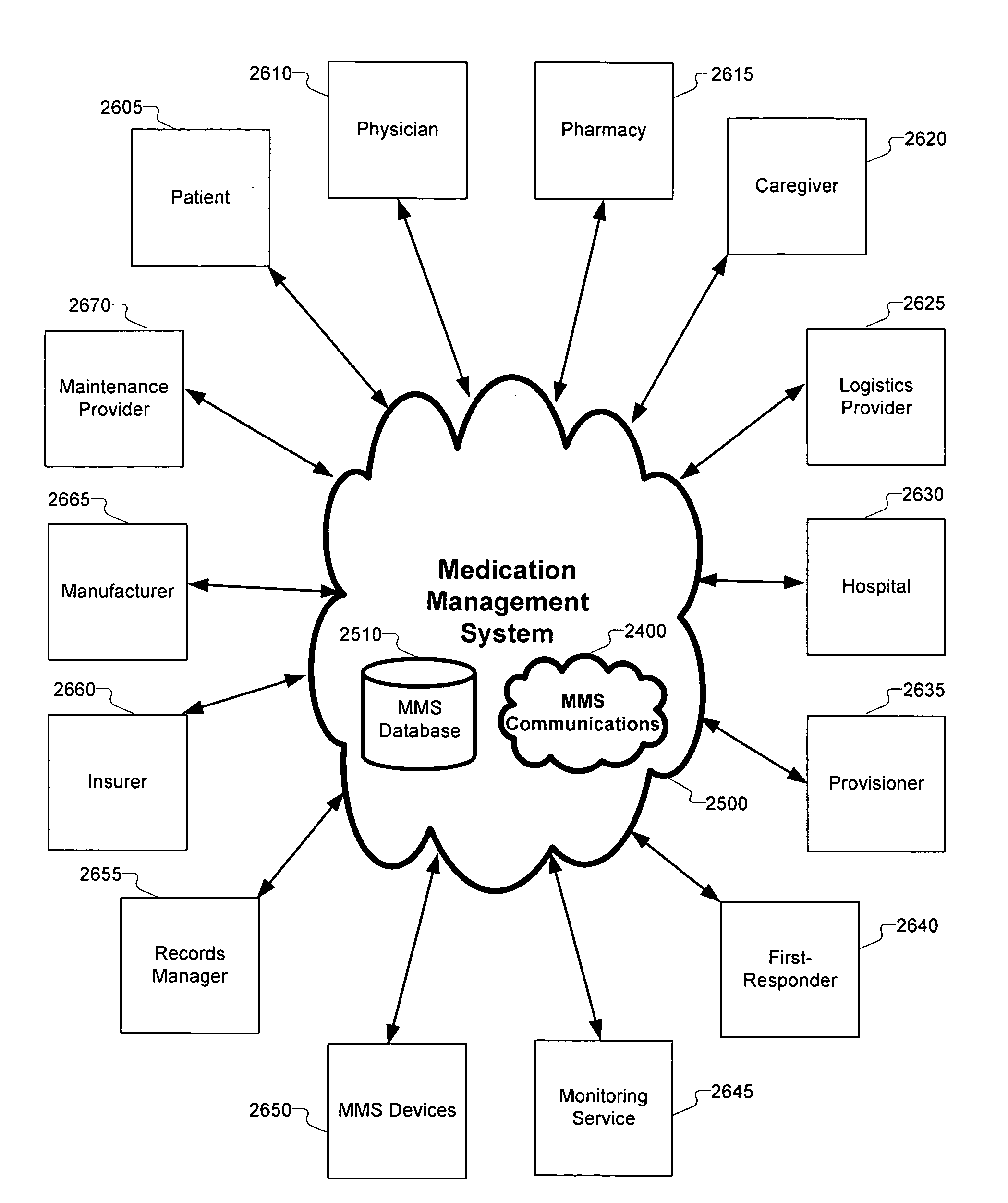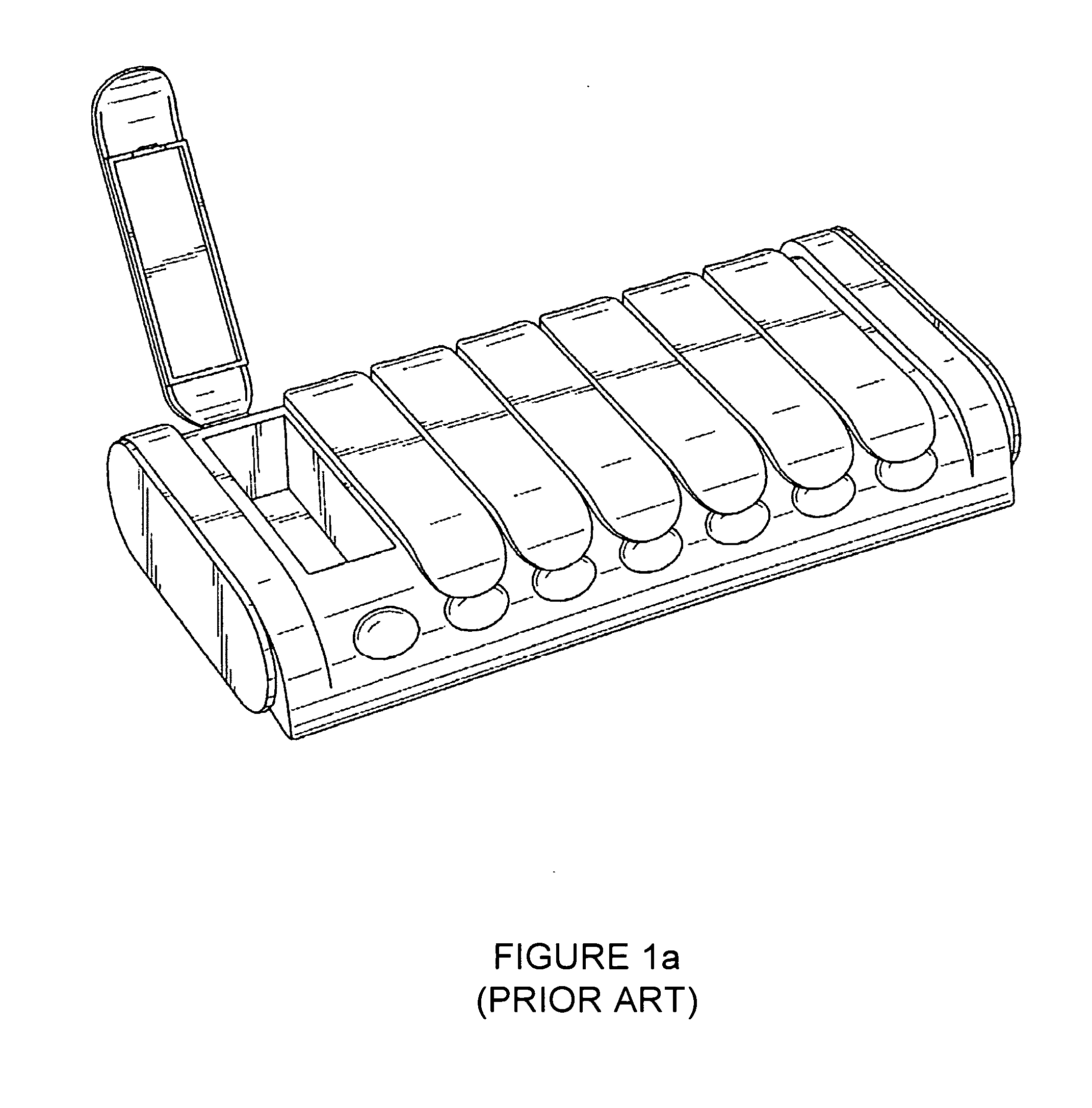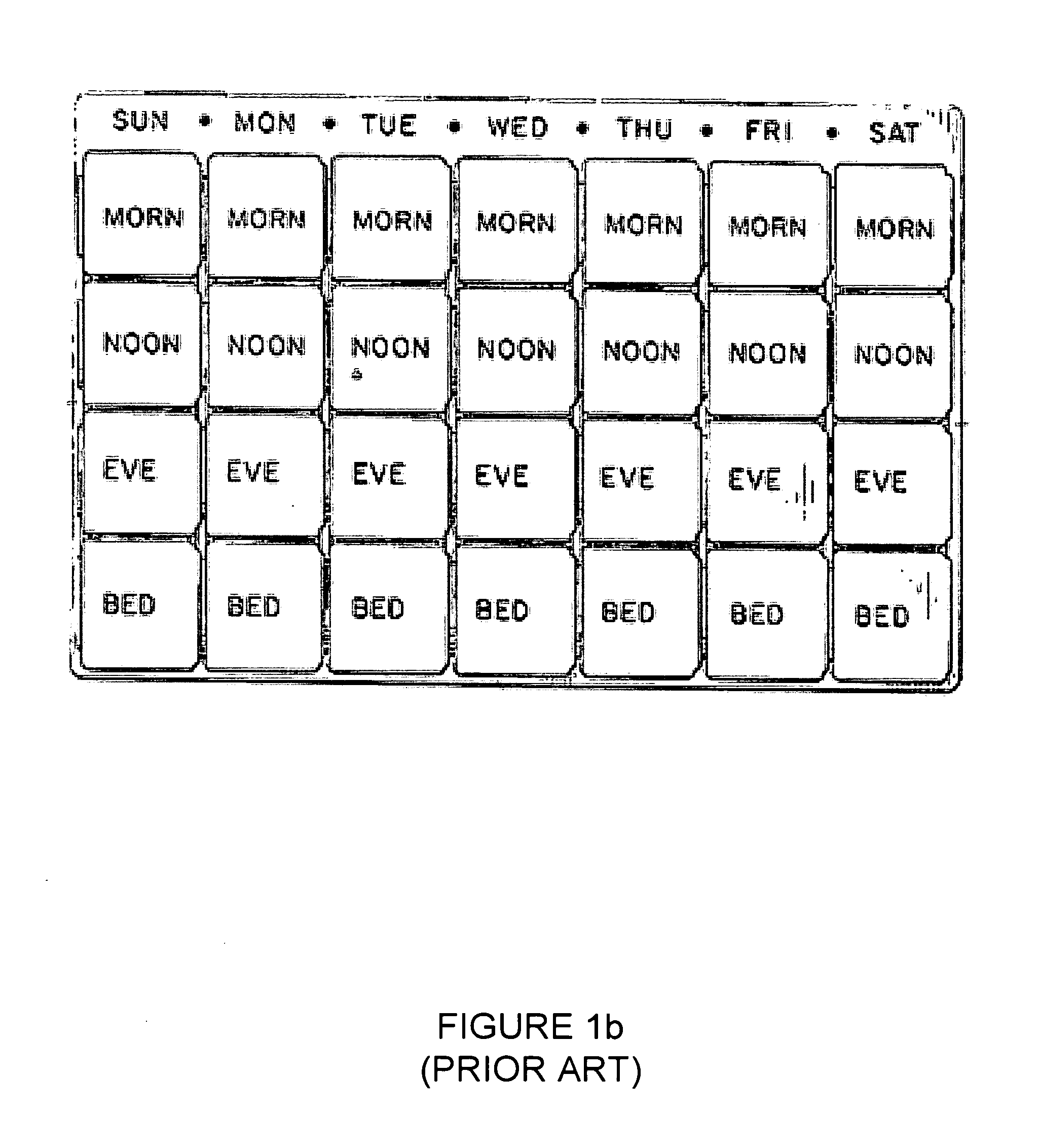Automated medication management system and method for use
a medication management system and automatic technology, applied in the direction of burglar alarm mechanical actuation, burglar alarm by hand-portable object removal, instruments, etc., to achieve the effects of less wastage, less wastage, and greater efficiency
- Summary
- Abstract
- Description
- Claims
- Application Information
AI Technical Summary
Benefits of technology
Problems solved by technology
Method used
Image
Examples
first embodiment
[0180]FIGS. 12a and 12b depict exemplary RFID tags (12100 and 12200) that have a typical configuration of a chip (12120 and 12220) attached to an antenna (12110 and 12210). In a first embodiment using RFID tags, when the packaging is opened, perforations (12130 and 12230) rip the tag into two parts, separating the chip from its antenna, and making the tag unreadable. Once a tag is torn, the package is considered opened and the contents used. FIGS. 12a and 12b illustrate several potential ways of arranging an RFID chip, antenna, and perforation so as to effect the separation of tag and antenna when the tag is ripped.
7.5.3.2 Paired RFID Tags
second embodiment
[0181]FIG. 13 depicts an exemplary set of “paired” RFID tags (13100), each having a chip (13120 and 13150) and an antenna (13110 and 13140). In a second embodiment using RFID tags, when the packaging is opened, perforations (13130) tear apart and separate Tag A from Tag B. Tag A remains with the packaging, and Tag B is discarded. For example, Tag A can comprise the details of a medication dosage, and Tag B, by its presence or absence, can indicate whether the packaging has been opened.
[0182]FIG. 14 depicts a process for using “paired” RFID tags, such as those depicted in FIG. 13, to determine the state of a packaged medication. In step 14110, an MMS device scans for RFID tags. If no tags are present, the process terminates. If RFID tags are present (step 14120), the MMS device attempts to identify them (step 14130). If the tags do not match an existing type, the process terminates. If the tags are a known type, the MMS device compares them with a database of known paired tags (step ...
PUM
 Login to View More
Login to View More Abstract
Description
Claims
Application Information
 Login to View More
Login to View More - R&D
- Intellectual Property
- Life Sciences
- Materials
- Tech Scout
- Unparalleled Data Quality
- Higher Quality Content
- 60% Fewer Hallucinations
Browse by: Latest US Patents, China's latest patents, Technical Efficacy Thesaurus, Application Domain, Technology Topic, Popular Technical Reports.
© 2025 PatSnap. All rights reserved.Legal|Privacy policy|Modern Slavery Act Transparency Statement|Sitemap|About US| Contact US: help@patsnap.com



